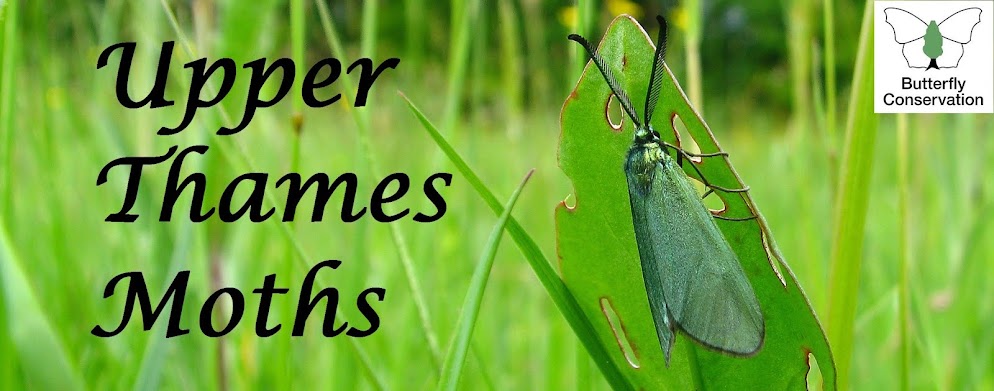Martin Albertini and I made a last-minute decision to run traps at Stoke Common again last night as Martin had to be there anyway for an evening meeting with the City of London management. A chilly site at the best of times, it looked at first as though we might have made a mistake because by 9pm it wasn't particularly warm although the promised cloud cover did stay in place. In fact we needn't have worried because the temperature didn't fall any further during the three hours that we were on site and there were reasonable numbers of moths about. The first moth in to one of my lights was the nationally scarce Small Chocolate-tip, which in Bucks is a species now known only from Stoke Common and one which we have targeted time and time again since its last sighting there in 2011. There is plenty of the food-plant Creeping Willow
Salix repens in amongst the heather so it should thrive at the site. The moth is supposed to have two broods but we have never had early sightings despite plenty of trapping at the appropriate time - all of the Stoke Common records are from July and August. We ended the night with four examples, one each to four of the five MV lights in use, so there is presumably still a healthy (if rather stealthy) population present.
 |
| Small Chocolate-tip, Stoke Common 17th July |
Grass Emerald also came to a couple of the traps. A supposedly common and widespread moth, this has become rare in Bucks and seems to be another Stoke Common specialist now. Two of last night's three specimens were very fresh and still green, this being a species that quickly fades to a whitish colour.
 |
| Grass Emerald, Stoke Common 17th July |
Other nice moths included double-digit counts of Birch Mocha, Chevron and Narrow-winged Pug, several examples of Tree-lichen Beauty and singletons of Barred Red, Four-dotted Footman and Double Lobed, with True Lover's Knot and Suspected providing the highest totals. Amongst the micros,
Pediasia contaminella and the dreaded Box-tree Moth
Cydalima perspectalis put in appearances, while
Pempelia genistella, which is another species known in Bucks only from Stoke Common, came to all of the traps. Most numerous was the smart little heather-feeding gelechid
Aristotelia ericinella.
 |
| Aristotelia ericinella, Stoke Common 17th July |
 |
| Pempelia genistella, Stoke Common 17th July |
Dave Wilton
Westcott, Bucks





No comments:
Post a Comment
Note: only a member of this blog may post a comment.